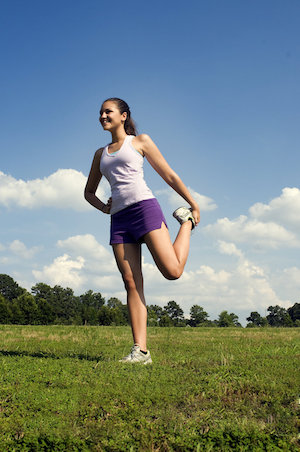Static vs. Dynamic Stretching
Which is better, static vs. dynamic stretching?
There are 2 different forms of stretching and when you use them it can mean the difference between increased flexibility and sports performance or an injury. The commonly known form of stretching is static stretching in which you move your muscle into extended movement where you begin to feel a slight pull in the muscle and hold it in that position for a few seconds. Although it’s often prescribed as an injury-prevention measure, static stretching before a workout might be the worst of all strategies. Because it forces the target muscle to relax, it temporarily makes it weaker. As a result, a strength imbalance can occur between opposing muscle groups. For example, stretching your hamstrings causes them to become significantly weaker than your quadriceps. And that may make you more susceptible to muscle strains, pulls, and tears in the short term.
Static stretching also reduces blood flow to your muscles and decreases the activity of your central nervous system—meaning it inhibits your brain’s ability to communicate with your muscles, which limits your capacity to generate force. The bottom line: Never perform static stretching before you work out or play sports.
Before you toss static stretching out, it does have a great role in increasing “passive” flexibility. This is awesome for improving posture and basic everyday activities. The important thing to note is that static stretching must be performed at least a couple of times a day, everyday, to see any noticeable flexibility improvements.
The best way to stretch before a workout is dynamic stretching. It is the opposite of static stretching because you are moving through a full range of extended to flexed positions for the target muscle groups. An example of this is an non-weighted walking lunge. So before you start your next workout or athletic event try this sample routine of movements that are probably already familiar to you: jumping jacks, arm circles, trunk rotations, front lunges, side lunges, high knees, and body-weight squats. Start with slow controlled movements and gradually increase you range of motion and speed as your body begins to loosen up. Do one set of 10 repetitions of each exercise consecutively until you have completed the complex.


